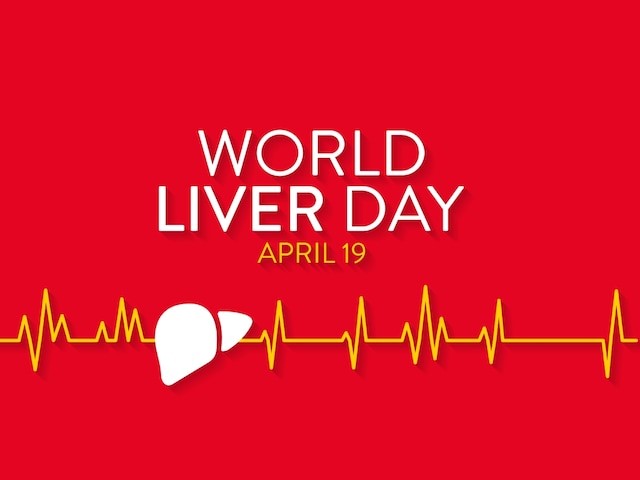Description

Source: News18
Disclaimer: Copyright infringement not intended.
Context
- World Liver Day is celebrated globally on April 19.
Details
Theme for World Liver Day 2024
- "Keep your liver healthy and disease-free": Emphasizes the importance of maintaining liver health through preventive measures and regular health check-ups.
History of World Liver Day
- Initiated by WHO: The World Health Organization introduced World Liver Day to raise awareness and promote research on liver diseases.
- First Commemoration: Formally celebrated on April 19, 2012.
- Annual Observance: Since its inception, World Liver Day has gained popularity, with various health organizations, hospitals, and liver treatment institutes hosting programs and activities to mark the occasion.
About the Liver
Anatomy of the Liver:
- Location: Located in the upper right quadrant of the abdomen, beneath the diaphragm and just below the rib cage.
- Structure: The liver is divided into lobes, consisting of thousands of lobules. Each lobule contains hepatic cells (hepatocytes), bile ducts, hepatic artery branches, and portal vein branches.
- Blood Supply: The liver receives blood from two sources - the hepatic artery, which carries oxygen-rich blood from the heart, and the portal vein, which brings nutrient-rich blood from the digestive system.
Functions of the Liver:
- Metabolic Functions:
- Carbohydrate metabolism: Regulation of blood sugar levels by storing glucose as glycogen and releasing it when needed.
- Lipid metabolism: Synthesis of cholesterol, fatty acids, and triglycerides, as well as the breakdown of lipids for energy.
- Protein metabolism: Synthesis of plasma proteins, including albumin and clotting factors, and conversion of ammonia to urea for excretion.
- Detoxification: The liver metabolizes and detoxifies drugs, alcohol, and metabolic waste products, converting them into forms that can be safely excreted from the body.
- Bile Production and Secretion: The liver produces bile, a greenish-yellow fluid that aids in digestion by emulsifying fats and facilitating their absorption in the small intestine.
- Storage: The liver stores essential nutrients such as vitamins (A, D, E, K) and minerals (iron and copper) for later use.
- Immune Function: The liver plays a crucial role in the body's immune defense by removing bacteria, viruses, and other pathogens from the bloodstream.
Common Liver Disorders:
- Hepatitis: Inflammation of the liver, often caused by viral infections (hepatitis A, B, C, etc.) or excessive alcohol consumption.
- Fatty Liver Disease: Accumulation of fat in the liver cells, which can be caused by obesity, diabetes, high cholesterol, or excessive alcohol intake.
- Cirrhosis: Scarring of the liver tissue due to chronic liver damage from conditions like hepatitis or alcoholism. This can lead to liver failure if untreated.
- Liver Cancer: Primary liver cancer (hepatocellular carcinoma) or cancer that has spread to the liver from other parts of the body (metastatic liver cancer).
Common Symptoms of Liver Disease:
- Loss of Appetite: Reduced desire to eat or lack of hunger.
- Abdominal Pain: Discomfort or pain in the abdomen, particularly in the upper right side.
- Jaundice: Yellowing of the skin and whites of the eyes due to liver dysfunction.
- Weight Loss: Unintentional loss of weight despite normal eating habits.
Diagnosis and Treatment:
- Diagnosis:
- Blood tests to assess liver function (e.g., liver enzymes, bilirubin levels).
- Imaging studies such as ultrasound, CT scan, or MRI to visualize the liver and detect abnormalities.
- Liver biopsy for definitive diagnosis of liver diseases.
- Treatment: Treatment depends on the specific liver disorder but may include lifestyle changes (diet, exercise), medications, antiviral therapy (for hepatitis), liver transplant (for end-stage liver disease), or surgery (for liver cancer).

Liver-Gut Axis
Understanding Liver Function:
- The liver, often called the body’s powerhouse, performs essential functions crucial for well-being.
- It detoxifies harmful substances, synthesizes proteins, stores glycogen for energy, and regulates blood sugar and cholesterol levels.
- However, factors like excessive alcohol, poor diet, viral infections, and medications can burden the liver, leading to diseases such as fatty liver disease, hepatitis, or cirrhosis.
The Gut:
- The gut, more than a passageway for food, hosts trillions of microorganisms forming the gut microbiota.
- This community aids in food digestion, synthesizes vitamins, and bolsters the immune system.
- Disruptions to this balance through modern lifestyles—processed foods, antibiotics, and chronic stress—can lead to gastrointestinal disorders like IBS, IBD, or leaky gut syndrome.
The Interplay:
- The intricate interplay between the liver and the gut, known as the liver-gut axis, involves bidirectional communication influencing each other's function.
- Bile produced by the liver aids in fat digestion and acts as a signaling molecule in the gut, modulating the gut microbiota’s composition.
- Conversely, metabolites from gut bacteria influence liver metabolism and inflammation.
- A healthy gut microbiome maintains gut barrier integrity, preventing harmful substances from burdening the liver.
Sources:
News18, Hindu
|
PRACTICE QUESTION
Q. While the liver detoxifies, metabolizes, and stores nutrients, the gut orchestrates digestion and plays a crucial role in the immune system. Comment. (250 Words)
|











